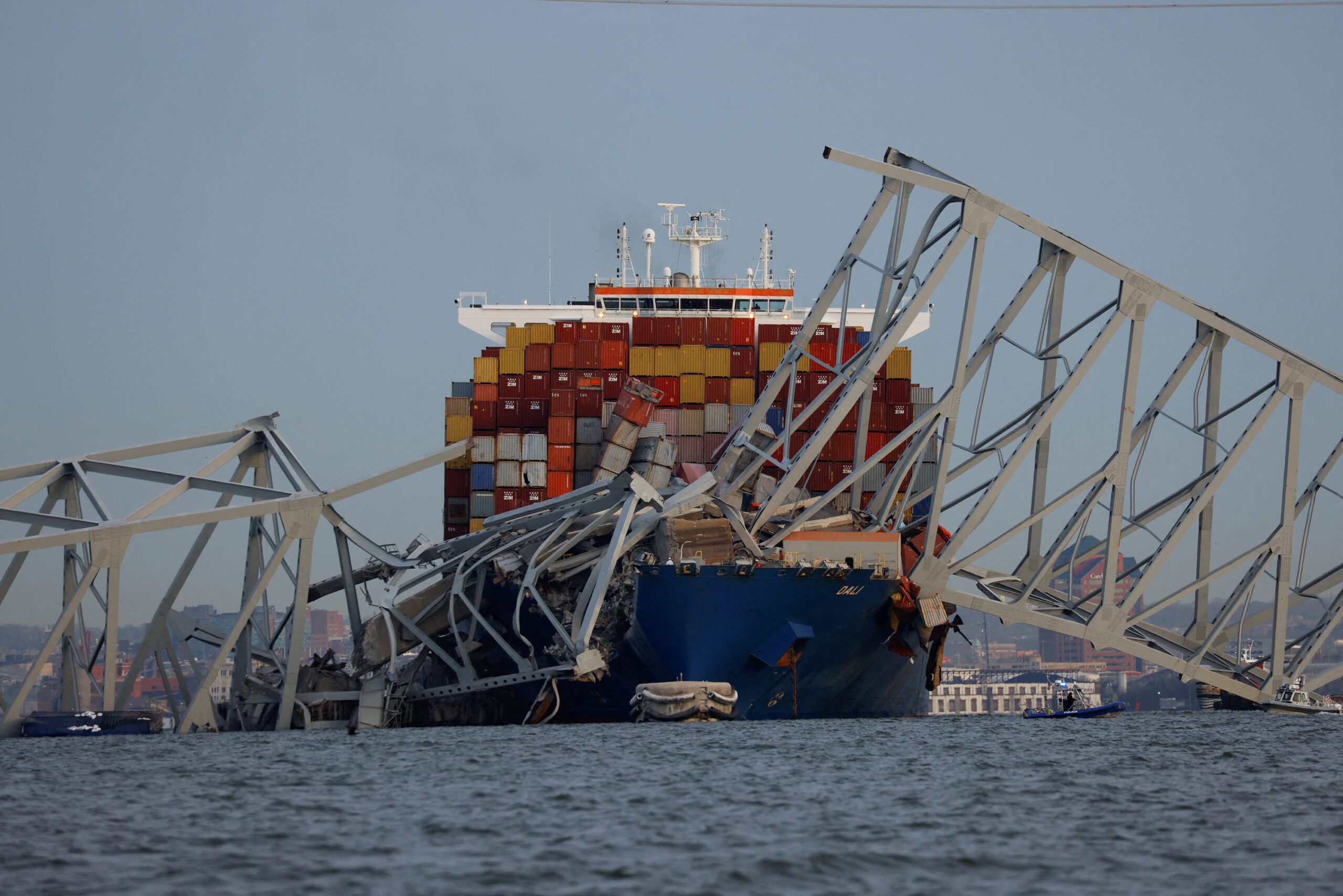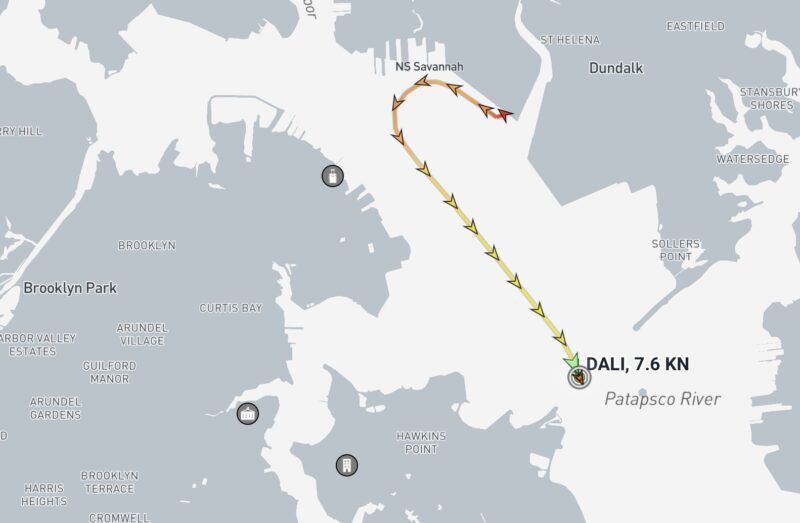Demolition Work Begins On The Francis Scott Key Bridge
by John Konrad (gCaptain) The Unified Command started clearing debris from the Francis Scott Key Bridge collapse today. They did not specify when they will resume the salvage operation for...


A view of the Dali cargo vessel which crashed into the Francis Scott Key Bridge causing it to collapse in Baltimore, Maryland, U.S., March 26, 2024. REUTERS/Julia Nikhinson TPX IMAGES OF THE DAY
The Francis Scott Key Bridge in Baltimore collapsed early today after the large containerships Dali struck a primary support column. Two individuals were rescued, one is seriously injured, and authorities estimate that seven people are currently missing, though the number could be higher. This incident represents the most severe US bridge collision since the Tampa Skyway Bridge disaster in 1980. The event occurred in the early morning hours as the ship was leaving the port under pilotage.
Agencies are reporting the containership Dali, which collided with a Baltimore bridge on Tuesday, “lost propulsion” while exiting the port. The crew on board alerted Maryland officials that they had lost control of the vessel, as reported by ABC News, citing an unclassified U.S. intelligence report.
“The vessel notified the MD Department of Transportation (MDOT) that they had lost control and a collision with the bridge was possible,” ABC quoted the Cybersecurity and Infrastructure Security Agency’s report as saying. “The vessel struck the bridge, causing a complete collapse.”
According to Marine Traffic the ship departed the Seagirt Marine Terminal in the Port of Baltimore at approximately 00:30 local time, sailed northwest past the Nuclear Ship Savanah then turned southeast to depart the harbor, released the tugboats, and collided with the bridge at approximately 01:38.


She struck the southwest support column at a speed of 7.6 knots (8.7 MPH).
Cameras from the Vessel Traffic Service captured footage of the collision and subsequent collapse. The ship’s lights went out twice before the collision, indicating possible issues in the engine room. Despite the quick restoration of lighting, this suggests a full blackout occurred, prompting the emergency generator to restore basic electrical services and lighting.
Without propulsion or tugboats, a ship this size is nearly impossible to stop.
The emergency generator does not connect to propulsion but should support steering and navigation systems but the ships heading appears to have been pushed off course by the wind directly into the support column.
Ships are not required to have tugboat escorts when passing under the Francis Scott Key Bridge so they have limited ability to slow down on their own when they lose power and can not put the propeller into reverse.
According to past photos, she is equipped with a bow thruster. However, these are not typically connected to emergency power systems. Even if it were engaged, bow thrusters are designed for slow-speed maneuvers and have a limited ability to push the bow into the wind when the ship’s speed exceeds 5 knots.
Early morning photos of the ship show that the port anchor was dropped. However, it is unclear whether it was dropped before the collision in an attempt to slow down the ship, or after the collision.
gCaptain will continue to provide updates on this story as more details emerge.


Join the 105,815 members that receive our newsletter.
Have a news tip? Let us know.Access exclusive insights, engage in vibrant discussions, and gain perspectives from our CEO.
Sign Up




Maritime and offshore news trusted by our 105,815 members delivered daily straight to your inbox.



Essential news coupled with the finest maritime content sourced from across the globe.
Sign Up